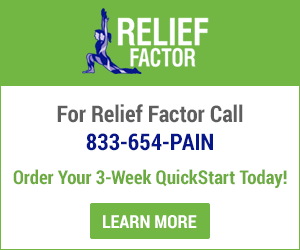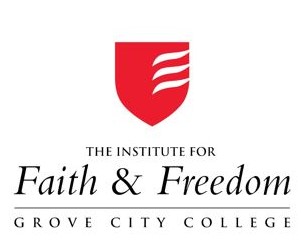Using Food for More than Delicious Nourishment

By Diane Medved, Ph.D.
—
Elise had an article to write, and only a day to write it. That’s because, like many term-paper, book, work report and article authors whose livelihood depends on their output, she loves having written, though the process getting there is not so easy.
She knew what she wanted to say, and she knew where online to find the research she’d use to support it. She sat down at her desk, turned on her laptop and opened Word.
And got the urge for a cup of coffee. Coffee legitimately accompanies sitting at a desk, right? Elise went downstairs, brewed a Kona-blend pod into her favorite mug, allowing herself a bit more half-and-half than usual, as a motivator.
Back at her desk, she typed in the title. And wrote the first paragraph, outlining each of her compelling points.
“Maybe I’ll go get a snack,” she thought, rising to check out the options in the fridge. She realized she wasn’t really hungry, but it was going on noon, so she perused the options—last night’s leftovers, veggies in the crisper, cheese…then she moved to the cupboard. Maybe she needed to make a sandwich. And sit at the table to eat it while reading her Kindle.
Sandwich and half-an-hour demolished, she returned to her computer, its screen saver still dancing. “Where was I?” she thought, re-reading her topic paragraph. Oh yes, get that study to show the first point. Some online searching. Some reading. Another paragraph written.
I’m still hungry, Elise thinks, and arises to fetch the chips she remembered seeing in the cupboard.
Elise is typical of many generally psychologically healthy people who use food consumption for reasons other than enjoyable nourishment. We’re not talking about food preparation–parents often thoughtfully prepare their kids’ favorites as an expression of love, and even when inconvenient and difficult provide their families nutritious meals day-in and day-out. Creating luscious and visually delightful dishes is the artistry of foodies and chefs, as well as a fascination for the rest of us addicted to the Food Channel. Certainly the many professionals involved in production, selling and presentation of comestibles have a huge stake in their wares.
No, we’re talking about eating. What is it that causes some people to use food as a “neck-up tranquilizer,” procrastination tool or balm for life’s stresses and tests? As a psychologist who’s spent three decades following the research on over-eating, and leading workshops I developed for those distressed or dissatisfied with the way they look or eat, I’ve observed the evolution of the field, as obesity rates climb and an array of experts continue to offer their (often conflicting) advice.
In Elise’s case, leaving her computer to get a snack accomplished two things that made her feel better. First, she got “negative reinforcement,” in the parlance of B. F. Skinner, whose “operant conditioning” theory described motivators for behavior. That’s when something unpleasant—like the pressure to create a well-written article sure to receive acceptance and praise—is removed. Step away from her desk, and voila, Elise’s burden immediately (if temporarily) vanishes.
The second reward is actually multi-facetted. Once she has food in her mouth, the taste, even if bland or predictable, provides stimulation and a positive sensation. Even more than that, the mechanics of eating—bringing food to mouth, chewing, swallowing—provide an outlet for feelings that’s intrinsically gratifying. The rewards of chewing and swallowing are what keep many eaters moving hand robotically from food to mouth, stopping only when the carton or bag is empty. I should mention here that eating disorders are serious, and anyone who compulsively binges, or binges and induces vomiting, requires the immediate attention of physical and mental health professionals.
But if you’re Elise—or someone else who simply eats beyond what your body requests, what can you do? I’ll share one of the tools I developed for my “Eat What You Want” workshops that might help. The goal is to approach food just as naturally thin people do—eating when hungry, savoring the foods that please them, and stopping when satisfied. Participants learn to be in touch with their body’s cues, realizing and dealing constructively with their urges to eat when the desire isn’t hunger-fueled.
I call this tool the “Urge Purge,” and you begin by evaluating your level of hunger when hit by the urge to eat. If you realize you’re not really hungry, but still want food, here’s the secret: you can discover your emotional need from the texture of the food you crave.
There are two categories of food textures toward which you might be gravitating. And they both usually represent normal, healthy needs that can be met directly, rather than indirectly by eating when you’re not hungry.
The first texture group is foods that are smooth—like ice cream, cake, yogurt, mac-and-cheese–anything that could melt in your mouth. If that’s your desire, you’re likely experiencing a need for comfort. Think about what in your life (or your outlook) might be causing that need.
Elise might feel unfairly saddled with her writing assignment, and need a sympathetic “poor baby!” Or, she might realize that she’s really not equipped for the task, and feel demoralized at her sub-par output. Similarly, she might feel discouraged about her broader abilities and future in her job, appearing to others competent but inwardly thinking she’s a fraud. All these understandable emotions call for soothing and support, and Elise, at her desk with her laptop, has the handy salve of a pint of Rum Raisin.
If instead of grabbing a spoon, Elise thinks about the feelings propelling her, she might take a constructive step toward allaying her fears or acquiring the support she needs. Simply identifying underlying emotional motivators allows them to dissipate. Then Elise might keep a list at her desk of comforting actions or props. She might read over affirmations reminding her of her accomplishments, or the many blessings she enjoys in her life. She might call her mom, a sure source of bolstering. She could choose her “happy” playlist for background music. She could intentionally let go of her insecurities by writing them in her journal. She could simply take ten slow, deep breaths, remembering that by responding to her feelings rather than smothering them with ice cream, she’s being true to herself.
If while not hungry the texture of foods you seek is crunchy, crisp, gnaw-able (e.g. chips, nuts, or often under diet influence, carrots) it’s likely you have a need for stress-reduction. Everyone’s under stress at various times, and crunching on foods that give resistance helps alleviate it.
Instead of munching tortilla chips, think of what’s causing the stress. You might realize that your angst is temporary and will end with completing your task. But there may be ways you can dispense with it in the interim. Usually that involves something physical—do ten push-ups, shoot some Nerf baskets, go somewhere private and sing at the top of your lungs, or yell at the source of your stress. Drum on your desk; run up and down stairs. Clean the toilet or move your couch to a new spot.
If you can, change the conditions that put you under stress or in need of comfort. Many people realize profound truths when they confront sources of the ongoing stress and hurt in their lives. Some have even changed careers, moved to be with one they miss, or undertaken something audacious simply because they realize how the status quo has pushed them toward food as a substitute for action.
Considering your hunger and the texture of foods you crave may not erase your underlying emotions, but it gives you a chance to honor and address them. That’s a win-win, as you’re not over-riding your body’s signals, allowing greater enjoyment of the food you eat when you’re actually hungry. And as Benjamin Franklin is famous for saying, “hunger is the best pickle!”
###
Diane Medved, Ph.D. is a psychologist and author of six books, most recently Don’t Divorce: Powerful Arguments for Saving and Reviving Your Marriage (2017), available in print and audio book at her website, DianeMedved.com. She and her husband, talk radio host Michael Medved,
raised their three children on Mercer Island.





















